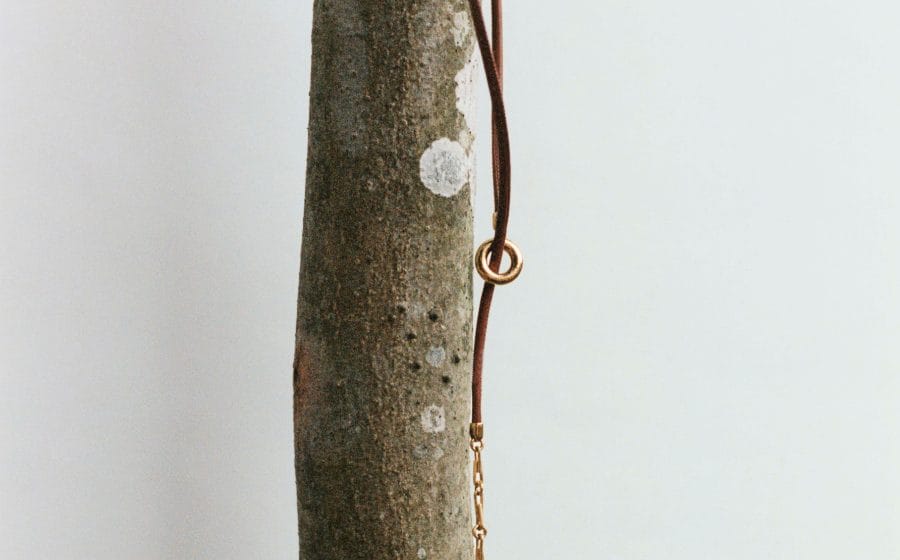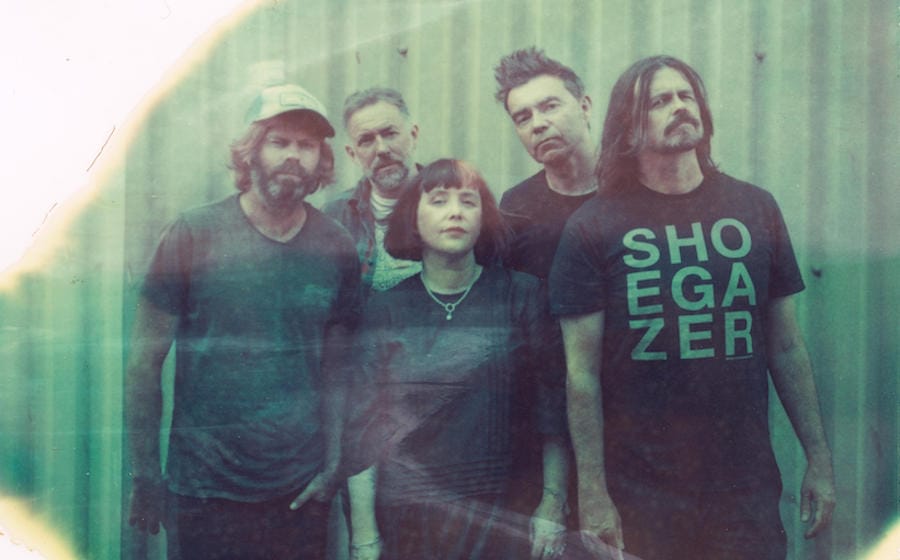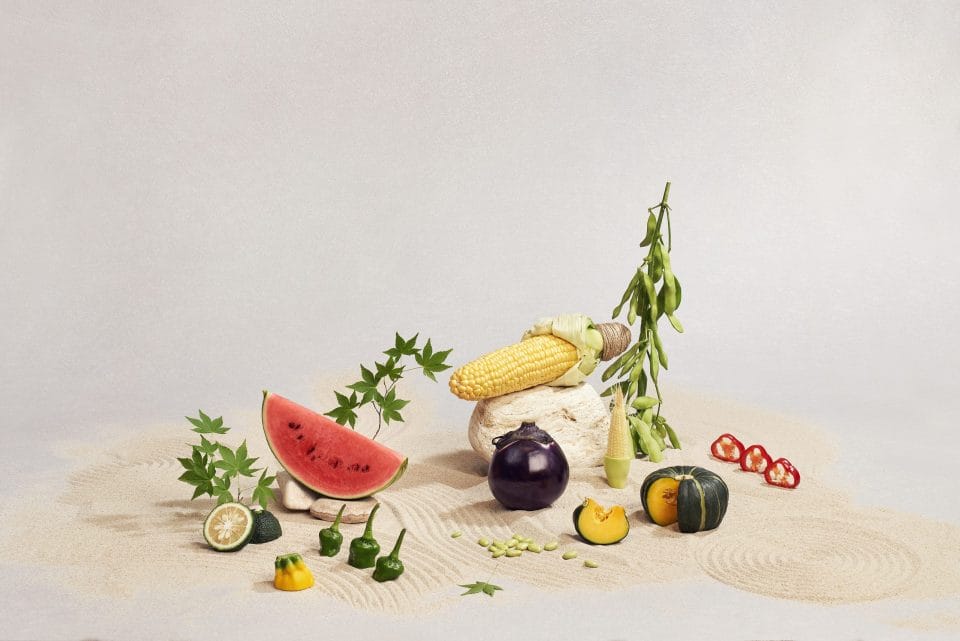
The typical Japanese summer menu with all its simplicities becomes hyper-sophisticated under Takeshi Araki, Head Chef of Esora.
Hello Chef Araki! To start this interview, I’d like to ask about the theme of Esora’s latest menu: Summer. I’m wondering, did you have a “mood board” in your mind when you were planning it?
Hello Bryan, we are inspired by nature and seasons and start by gathering the produce of the land, mountain, and sea that nature brings us each season as well as the flavours we want to deliver.
Funnily enough, I did a weather check and Hiroshima in August seems to have the same temperature as Singapore. could Esora’s Summer menu be relevant for Singapore through out the entire year? Summers in Hiroshima can be very hot and humid –there can be periods of good weather, with maximum temperatures of around 35 degrees Celsius, tropical nights, and high humidity, but also periods of bad weather due to the summer monsoon. UnlikeSingapore, our rainy season in Hiroshima is June – July; June is often the wettest month, with August being the hottest month.
View this post on Instagram
If you close your eyes right now, what comes to mind thinking of Summer?
Probably the sight of mountains, and waterfalls, and engaging in outdoor activities like hiking and camping. I see dandelions, sunflowers, and local summer festivals (Natsu Matsuri).Matsuri is a local festival held in each village and town, where there will be small stands and booths set up to sell food. Some of their food items include sweet corn, green pepper, tomato, and grilled eggplant – all the summer vegetables I enjoy eating.
When I close my eyes, the colours that come to mind are mostly green – a deep green, because of the mountains; as well as yellow, because the rice paddies are in full bloom during this period, just before being harvested in autumn.I grew up in an area surrounded by many rice farms back home in Hiroshima. I also hear the sounds of cicadas and the songs of birds, especially during hiking. Summer also brings the laughter of happy children playing outdoors during their summer vacation.
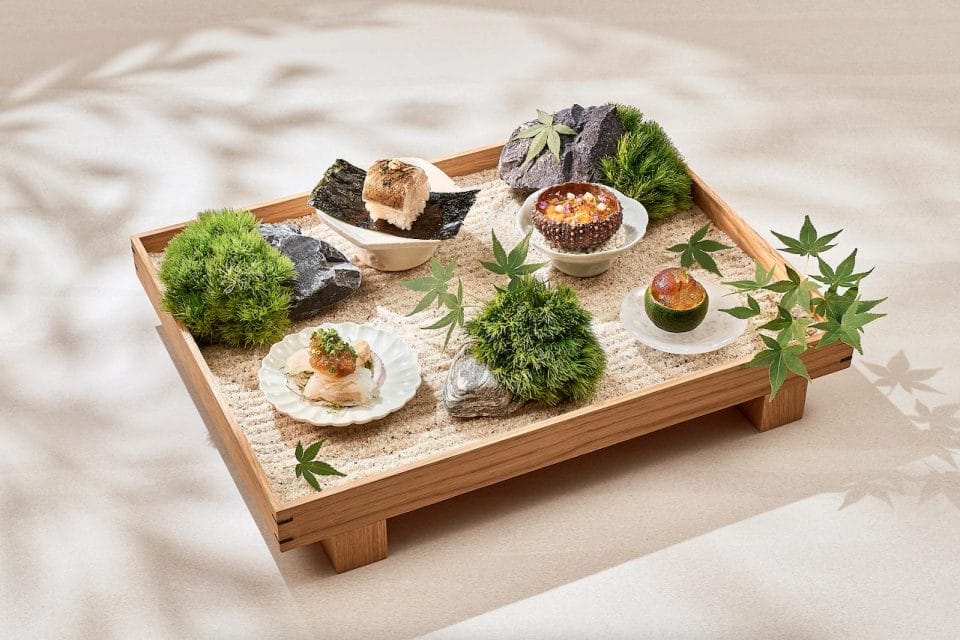
Looking through the menu, I noticed that the food can be sold in a “simpler” form at Summer festivals. How would you rate the complexity of creating, cooking, and preparing a Summer menu compared to a Spring one?
When creating the menu, I always start with the season’s produce and think about how to bring the best flavours while giving full respect to the integrity of the ingredient I feel the season should be visible, not just in terms of aesthetics but importantly also through taste. So regardless of the season, the creative process always starts with the inspiration from nature and the organic beauty and purity of the finest seasonal produce.
Then we go about achieving a balance and harmony of flavours by applying modern techniques to Japanese tradition, bringing that little touch of ‘surprise’– the touch of familiar yet new.
I recently wrote about the return of fine dining. However, Esora strikes me as a place that takes it one step further. You get the“high art” of fine dining but nothing on the menu is “strange or weird” — What you see on the menu is literally what you get albeit beautifully. Is anything too “simple” or “strange” for you?
At Esora, nature inspires us, and more often than not, what comes from nature is beautiful and pure, We work to bring out the best attributes of these ingredients, whilst remaining mindful of their innate characteristics and beauty. Through our affinity with nature, we want to impart a sense of understated elegance and beauty.
View this post on Instagram
What is the easiest and hardest dish to prepare?
Both Noboru and I come from Hiroshima, and lemons from there express summer for both of us. We enjoy the popular cured sugar lemon spritz during the hot summer season. So when we were thinking of a summer pre-dessert, it was easy for us to agree on serving a salted lemon sorbet which is a refreshing palate cleanser before desserts. You are right to say all our dishes are thoughtfully created and prepared to showcase the best of summer ingredients. As such, although the Hassun may not be the most difficult to prepare, it does demand a lot more thought in presenting this four-part platter as it expresses the season in the most aesthetic and tangible manner.
Each of the four items showcases shun- referring to the exact moment an ingredient is at its peak flavour. We prepare each produce in a way to bring out its best attribute, and at the same time, complementary in flavour and taste when served together.For this summer, we are presenting our Hassun in a karesansui-inspired garden with rocks, sand and botanical elements to symbolise the essence of nature.
If I could be honest, the “Zen Garden” form of plating is overdone at times, It almost feels like most Kappo restaurants do it so much that it becomes a trope…
The season’s ingredients, not to overshadow them. We believe the karensansui-inspired garden will bring a sensory beauty in harmony with the overall dining and service experience delivery.
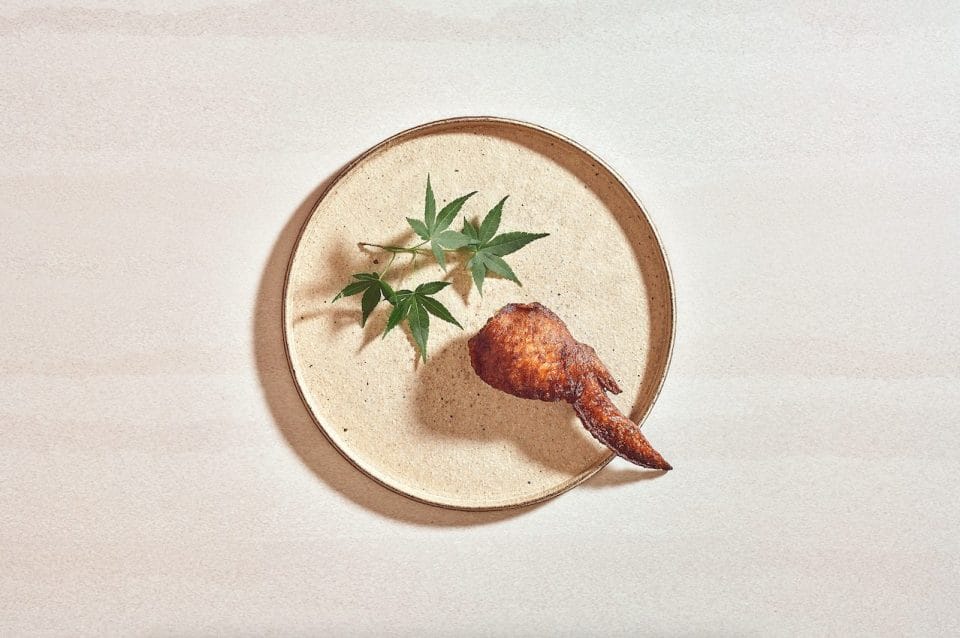
I think the Chicken Wing dish on the menu is hilarious; it’s the prime example of what Esora does so well: taking something so ordinary but elevating it to “Haute cuisine”.|
This dish is one of Esora’s signatures, and every season we showcase a seasonal iteration. This summer, look forward to a stuffing made with summer vegetables mixed with kegani

Our good relationship with the supplier means that we can get the best cut of Omi Wagyu sourced from the Okaki farm in Shiga prefecture known for producing one of Japan’s most respected and prized beef. In addition, we believe the Omi Wagyu experience is also heightened by how the beef is served to diners. We slice the beef into ideal portions to fine-tune the dining experience.

Lastly, the Hiroshima Lemon and Kakigori desserts are so wonderfully simple. Was it perhaps a choice to finish off with something simple after elevating everything before?
When creating a dish, we focus on produce and flavours where techniques are applied thoughtfully to bring out the best in them. We approach desserts in the same way.
Once you’re done with this story about the Esora Summer menu, click here to catch up with our August 2022 issue!


